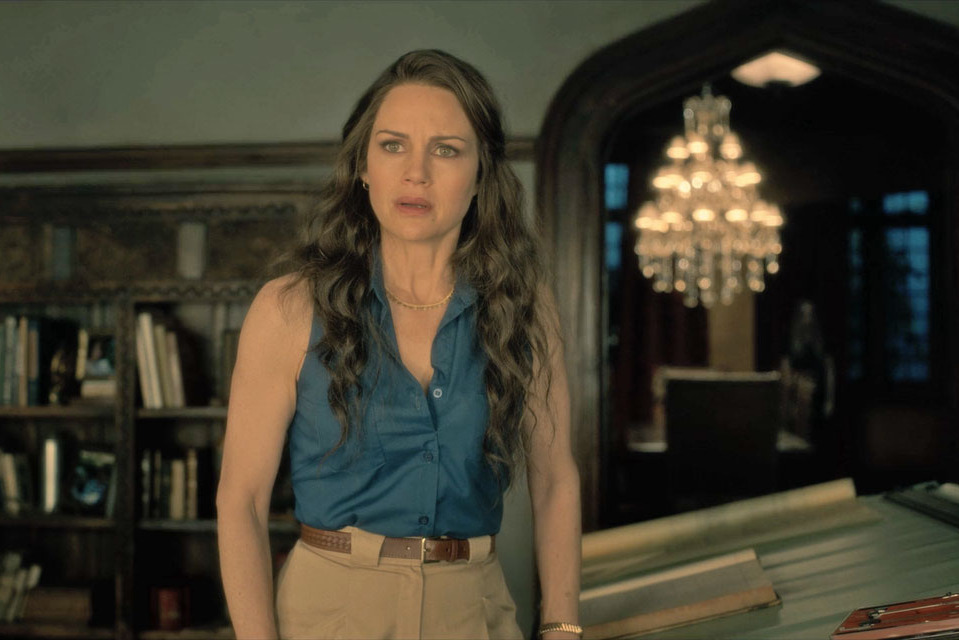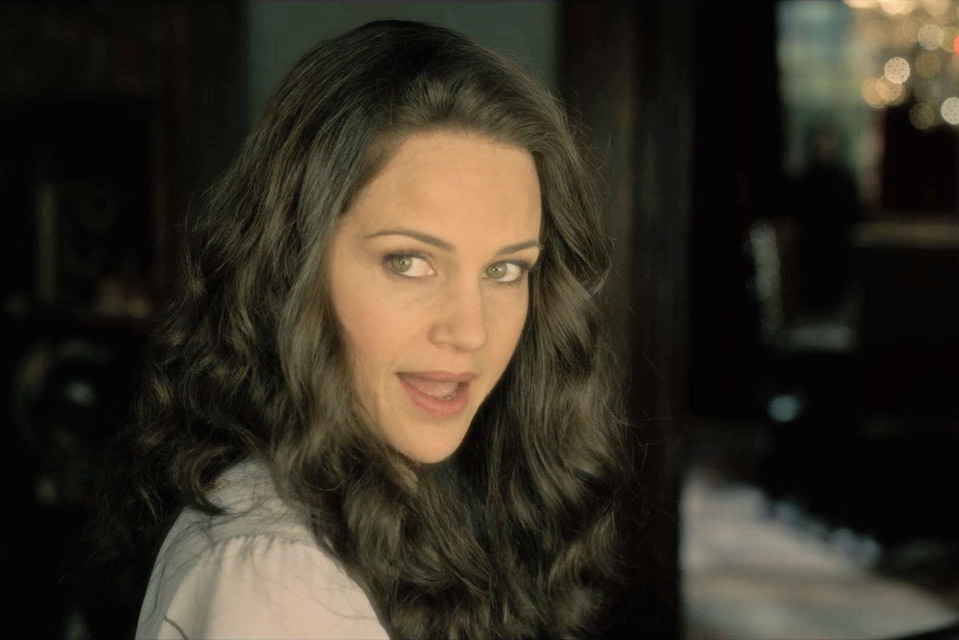Last Updated: February 14th, 2020
Our most recent television excursion that has made for some quite addicting nights in is The Haunting of Hill House. This new Netflix series consists of 10 episodes of horror and drama. Paranormal shows – be they more in the reality TV vein like Ghost Adventures, B-Movie campy horror, or more stern and serious tales like we have here – tend to not do a whole lot for us. Many of these shows rely too heavily on cheap tricks to scare the audience, and don’t make up for it by telling a seriously haunting tale.
While The Haunting of Hill House doesn’t fully escape cheap scares (we swear – most of the times we were actually frightened was because of the loud jump scares that would probably blow out cheap speakers), it does tell a great story. The actual acting and screenplay is well done, but what stands out most to us is the cinematography. It is on par with the look and feel one might expect while watching a Guillermo Del Toro film. In fact, it shares a lot of similarities in this way with Crimson Peak – his Gothic horror ghost flick from 2015.
Despite what it may seem, this isn’t actually a review of The Haunting of Hill House. What it’s accomplished can be better discussed, analyzed, and ripped apart by professional film and TV critics out there – we quite like Vulture’s episodic break downs (obviously: spoiler alert!).
For today, we’re going to talk about the practical effect seen throughout every episode of the show. The effect of creating “background ghosts” in camera.
What are the background ghosts?
 In case this is your first time hearing about the background ghosts of The Haunting of Hill House, let us bring you up to speed.
In case this is your first time hearing about the background ghosts of The Haunting of Hill House, let us bring you up to speed.
During our time watching the show, we happened to notice on a few instances some figures in the background of a number of scenes. Sometimes, these were really obvious. Other times, they were tucked away and if you blinked, you missed them.
Through some simple online searches, we came to discover that there are a huge number of these. There are more than just the ghosts we come face-to-face with through the story.
While we’ve provided a couple screenshots to help better talk about this cool phenomenon in the show, you can also check out an in depth breakdown over at ScreenRant.
How the background ghost effect is made in camera

[amazon_link asins=’0143039989′ template=’ProductAd’ store=’ffl0d-20′ marketplace=’US’ link_id=’f1a838ac-0255-11e9-9ee1-9dcd79944635′]
Now for the moment you’ve been waiting for. We want to talk a little bit about how this effect is actually produced. This is what really intrigues us as photographers and general lovers of TV shows and movies.
We’ve done some digging, and can’t seem to find anyone talking about how these ghosts make their way into the many scenes they appear in.
First, there are definitely some post processing effects that go into the creation of these ghosts. Even the color grading of the show impacts how they look (and the show as a whole!). The use of contrast and playing with light also plays a role. All of these things play a role in the presence of these ghosts, and maybe even make them more frightening.
However, based on our observations, most of these background ghosts actually seem to be something even more sinister. Well…not really. These “ghosts” actually appear to be actual stand in actors. Actors dressed like they ghosts they are portraying.
How could this be?
The Depth of Field Trickery

In the world of photography and videography, controlling depth of field (DOF) is one of the key features of our art form that distinguishes it from how we see things with our own eyes.
In the camera, depth of field is controlled by the aperture setting. If your totally new this the word “aperture,” you should probably check out our article about The Exposure Triangle where we talk about it in depth!
The way the aperture is measured is in “f-stops.” The aperture is directly tied to the optics of the lens you are using. Prime lenses enabling pictures and video to be taken as low as f/1.2 are expensive, but create the maximum separation between the subject and the background environment. One of our favorite lenses like this is the Canon 85mm f/1.2L lens.
As seen in the above image, the subject (being the woman in the foreground) is the focus of the shot. In most shows, our eyes would not care to drift too much into the background. The Haunting of Hill House is actually unique in this way – because rarely do we find ourselves borderline ignoring what is happening in front of our eyes. In exchange, while watching the show, we find ourselves more often than not looking around the scene to see what other stories are being told.
These background ghost scenes are created by the videographers simply using a wide aperture lens. This is paired with placing a ghost actor in a location set back behind the main subject. The result is a scene where there is a distinct human form, but it is blurred as a result of the depth of field. This resulting blur, the bokeh, is itself a beautiful thing – and in the context of this show, makes for a often unnerving illusion.
Want more of The Haunting of Hill House?
The Haunting of Hill House has turned out to be a great show in our book. Not surprisingly, it has its roots tied to The Haunting of Hill House novel by Shirley Jackson. We highly recommend checking out the show on Netflix. Just try not to get too carried away looking for those freaky background ghosts!! 🙂
If you want to talk some more about these background ghosts, leave a comment below!
If you want more advise on how you can nail the shots you want, our 101 Digital Photography Tips Guide is a great starting point for that, too!!